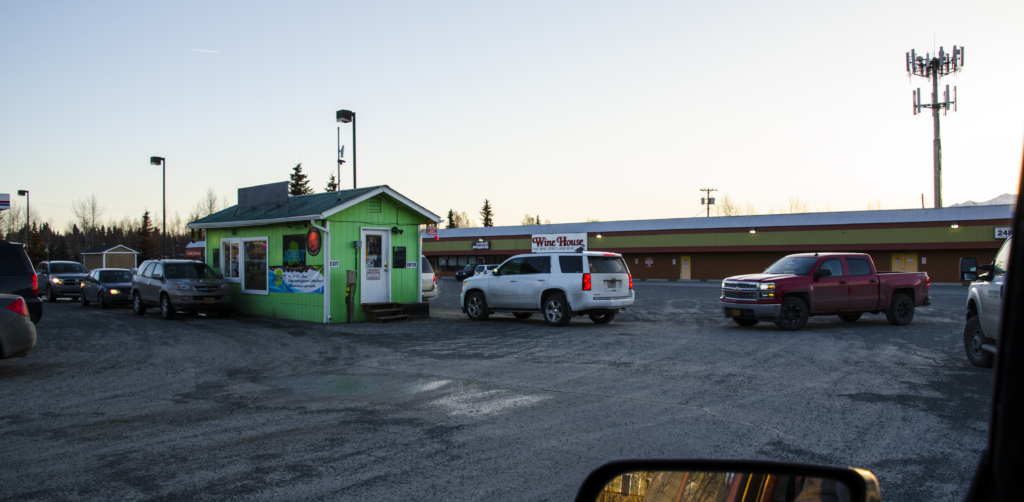
Dawn is breaking over Anchorage. Joined by my family’s yellow lab, Lilly, we drive down Jewel Lake Road toward Dimond Boulevard at 7 a.m. The sun isn’t quite over the mountains yet, but the line outside Java the Hut is already four cars deep at both windows. The unmistakable lime green hut is one of many that dot the parking lots and roadsides throughout the state, and that makes it that much easier for coffee-obsessed Alaskans to get their fix.
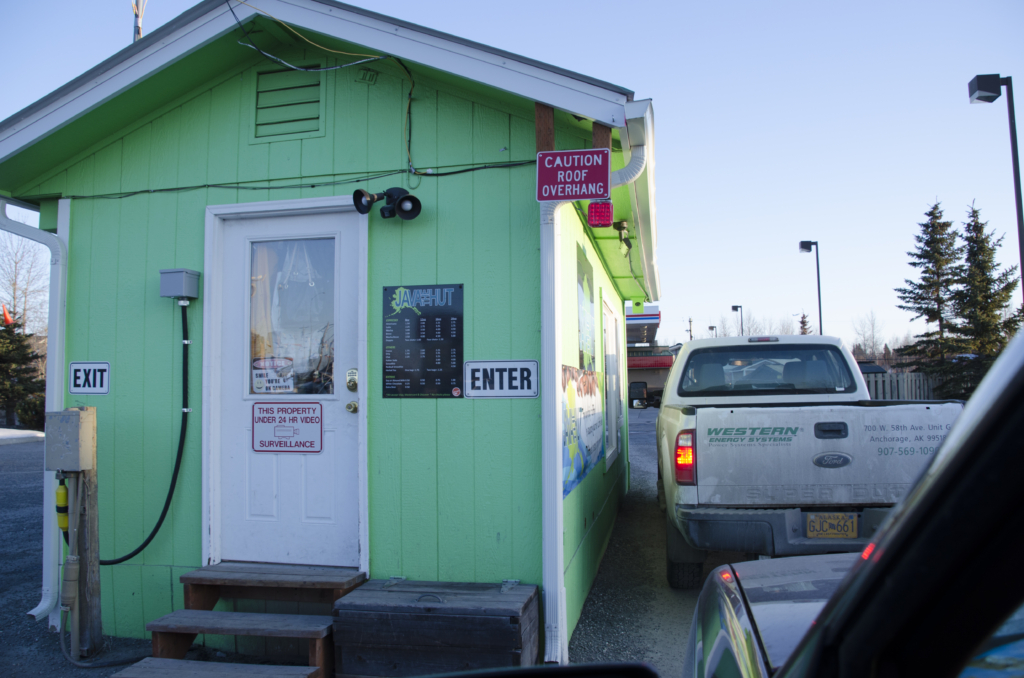
According to the most recent count in 2017, there were 170 active coffee shops in Anchorage. By that figure, we presently have more coffee shops per capita than Seattle, which is a city known as the birthplace of the coffee powerhouse Starbucks. Juneau, our humble capital, presently ranks higher than Anchorage per capita with a whopping 22 coffee shops serving Juneau’s population of just under 33,000 people.Lilly is visibly excited as we take a spot in line. She loves going for coffee almost as much as I do, for her it means free treats and a shower of compliments. She hangs her head out the window and wags her tail. It sure is tough to be an Alaska dog.
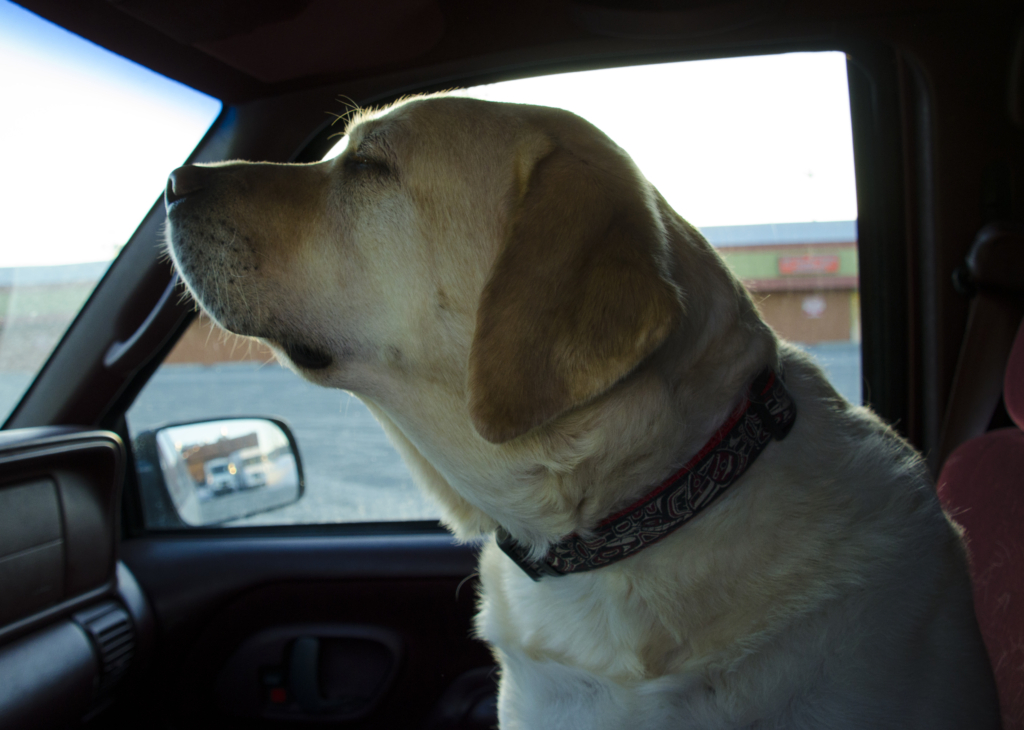
After a surprisingly short wait, the car in front of us drives away, and we pull up to the window. After taking my order, the barista says hi to Lilly and asks if she can have a treat. I say yes, and she hands me an XL Milk-Bone that vanishes within seconds. There are only two women working right now which is typical for a coffee hut in the morning. Most of them are so small that there wouldn’t be room for anyone else inside. Their service is efficient regardless, and a few minutes later I’m pulling away with my mocha in hand. On Dimond Boulevard two minutes away, Midnight Sun is just as busy.
It’s these coffee huts that are why the number of coffee shops in Alaska is so high, and they indicate just how fused the Alaska lifestyle is with coffee. With Java the Hut, Rush, Sugar Shack, Bikini Babes and many more, the number of coffee huts seem to multiply by the day. Rarely in Anchorage is there a street corner seen without a coffee hut or an espresso stand, and this is true for other parts of the state as well. In the 316-mile stretch from Wasilla to Fairbanks, for example, there are more places to get coffee than there are to get gas. In case the 50-mile drive is just too much to manage without another latte, there is even a hut halfway between Willow and Talkeetna.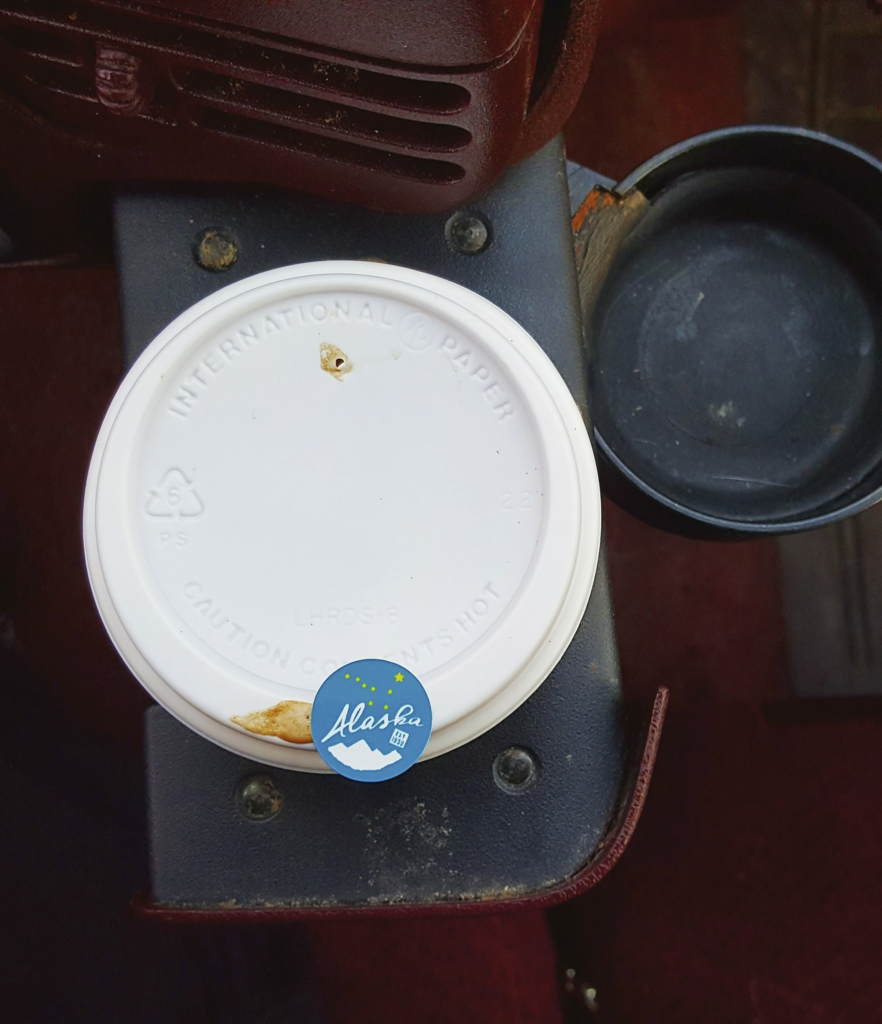
The ubiquitous coffee hut
Alaskans undeniably love their coffee, but the coffee hut is unique to our state. In contrast to the brick-and-mortar locations of the Lower 48, coffee huts — quick, drive-through locations — as we know them are a rare sight, and many states don’t have them at all. You might ask why. Being someone who has spent time in Minnesota and North Dakota with winters nearly as harsh as they are in Fairbanks, I’ve often wondered why the coffee hut isn’t a concept that has caught on there. It turns out that there might be an answer that has nothing to do with how much Alaskans like coffee. According to the Alaska Food Code, food service establishments with a maximum capacity of 12 people are not required to be connected to a water line. The only requirement is that the water be potable, and that wastewater is properly disposed. This is understandably so considering that in some rural areas of Alaska an established water line may not exist or be expensive. The benefit is that it makes it easy for businesses like coffee huts to take up residence in whatever open lot they can find. Most of them store water in onsite tanks that are filled each morning rather than having a connected a water line. In most of the lower 48, the rules for water sources and how they apply to stationary food-service establishments are stricter, and those rules can only be circumvented by mobile businesses like food trucks.
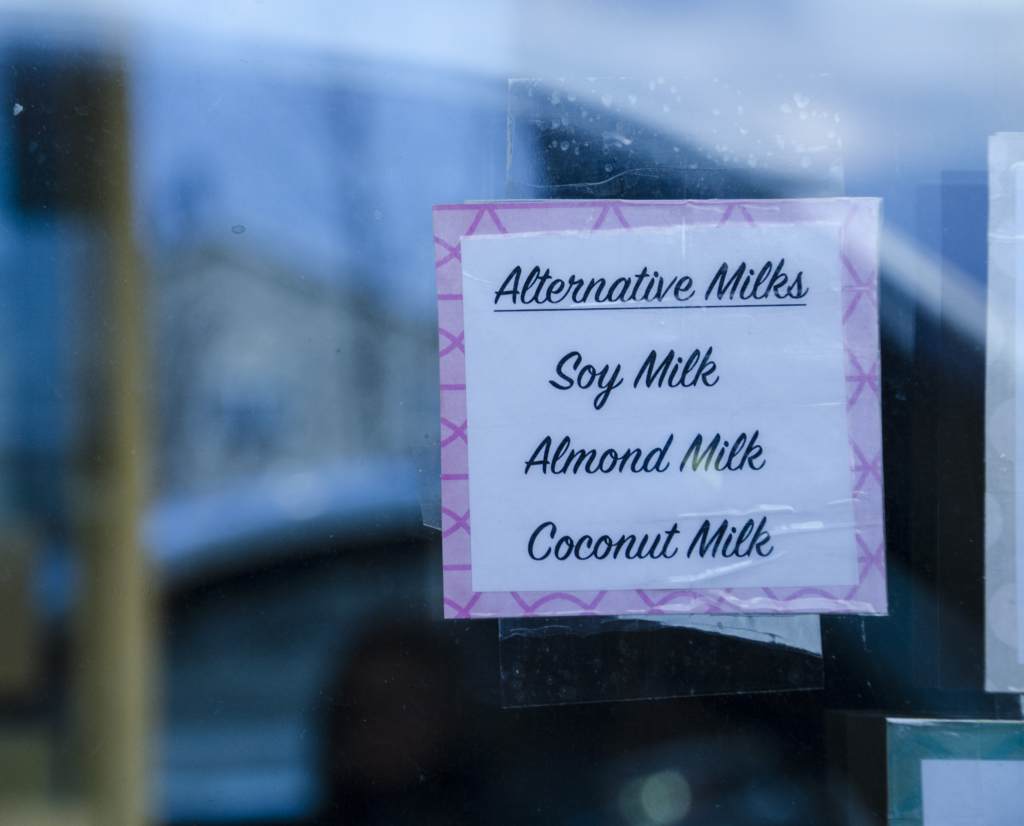
Whatever the reason for the abundance of coffee huts in Alaska, it means quality espresso is always within reach. As I drive, I sip on my mocha. I didn’t ask what today’s beans were, but I can tell it’s a rich dark roast perfect for a morning pick-me-up. In a few hours, I’ll likely stop somewhere else for another cup before I head to class.
Putting coffee on the map
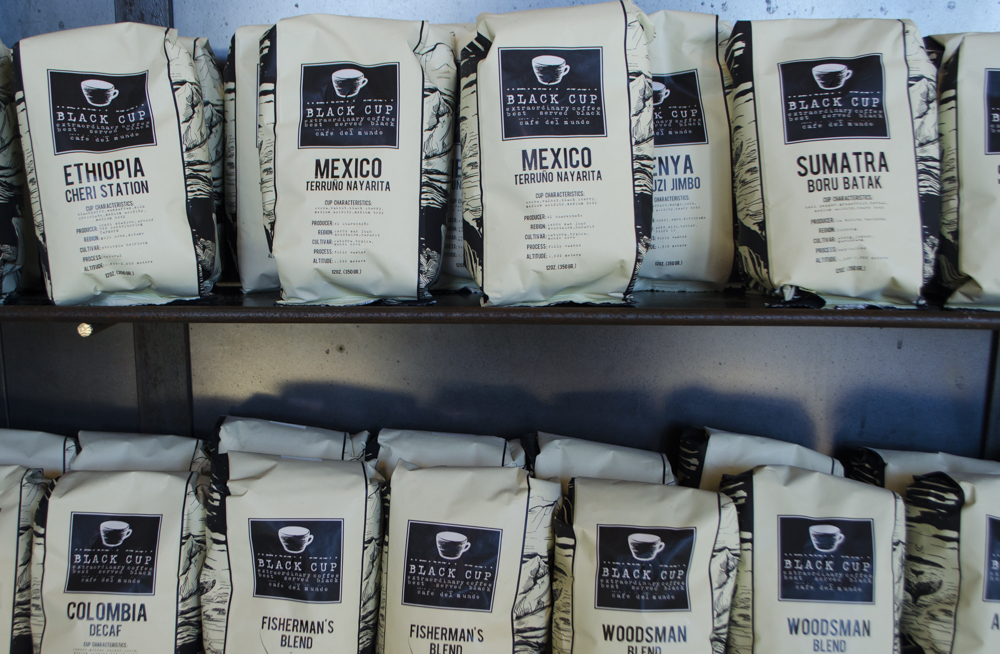
It’s 3:30 p.m. and, the sun streams through the windows at Black Cup, and it is packed full of customers. It’s a completely different atmosphere from the morning rush of the coffee hut and much more reminiscent of the traditional west coast coffee house that comes to mind when someone mentions a cold brew or a pour-over. It’s comfortably quiet despite the crowd. Students sipping at espresso work on laptops, and slightest amount of conversation in the air blends seamlessly into the sounds of the coffee machines. I order a latte and find a spot to sit. Next to me, an older couple shares a cookie and reads the newspaper. They both smile and say hi to me as I stir what will inevitably be too much sugar into my latte. Today’s espresso is a dark roast from Honduras and it would be hard to imagine one with a more superior flavor. 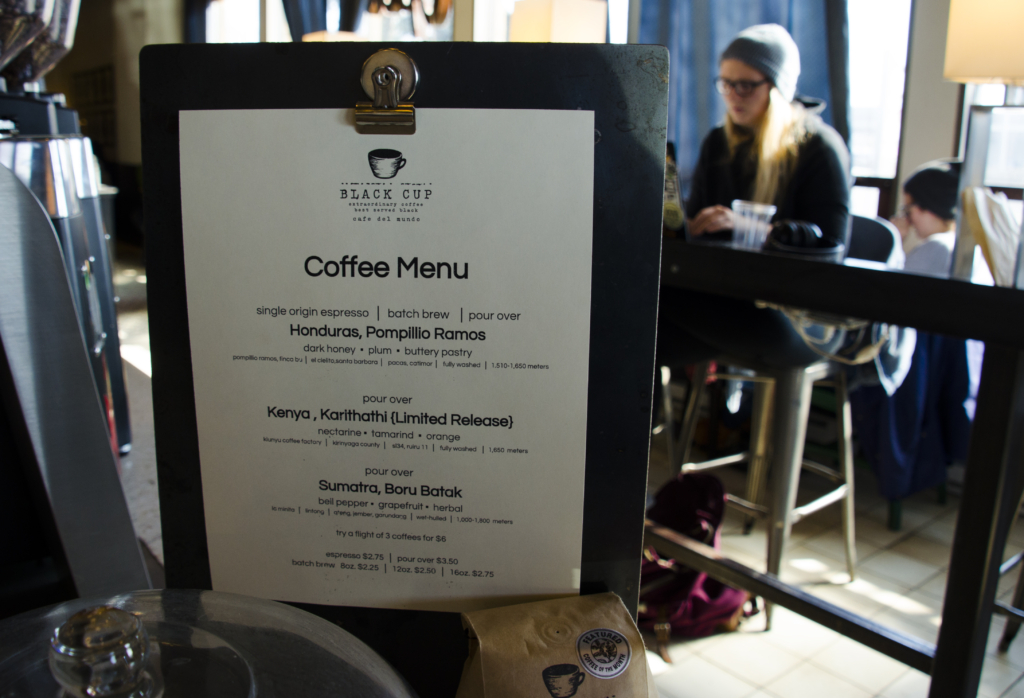 Black Cup, previously known as Cafe del Mundo, was Alaska’s first local roaster, and arguably responsible for getting Alaskans hooked on locally roasted coffee alongside Kaladi Brothers. Former owner Perry Merkel came onto the scene with Cafe Del Mundo in 1975 and Anchorage has been sipping espresso after espresso ever since.
Black Cup, previously known as Cafe del Mundo, was Alaska’s first local roaster, and arguably responsible for getting Alaskans hooked on locally roasted coffee alongside Kaladi Brothers. Former owner Perry Merkel came onto the scene with Cafe Del Mundo in 1975 and Anchorage has been sipping espresso after espresso ever since.
While it’s clear the intentions of Cafe del Mundo and Kaladi were to bring the coffee scenes of Seattle and Portland to Alaska, when I look around these shops I think our attraction to local roasts is less coffee snobbishness and more a matter of personal pride. Alaskans are proud to be Alaskan, and our devotion to local coffee reflects this. Many coffee drinkers lack loyalty to one Alaskan roaster over another. We’re perfectly happy to start our mornings with a Steam Dot pourover and finish with a Kaladi Brothers latte in the afternoon.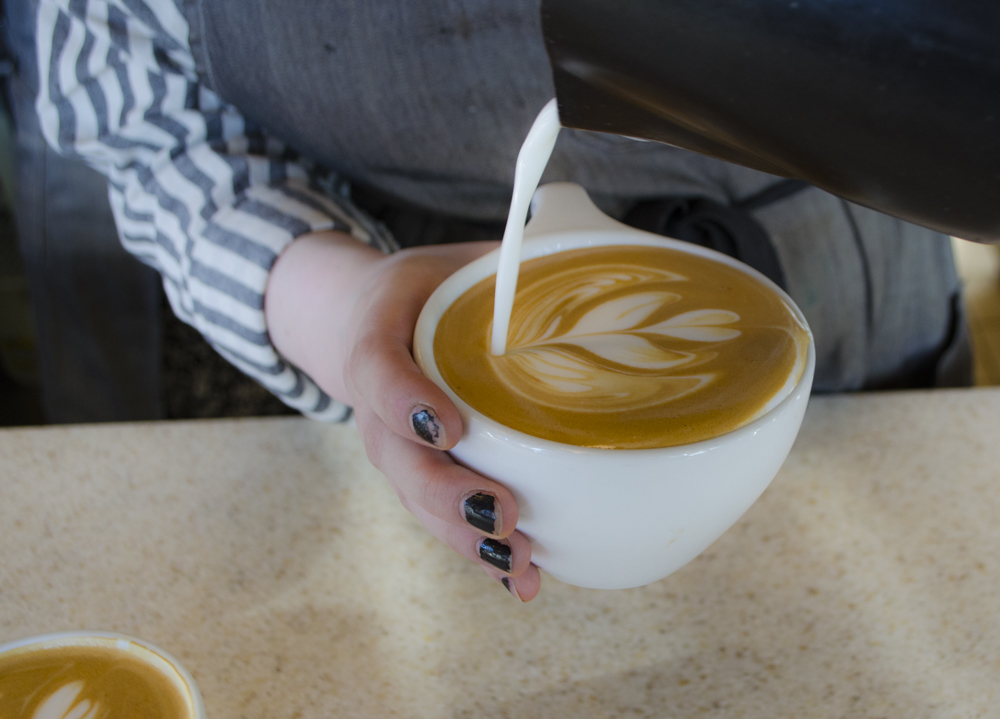 “It’s the ‘Alaska’ that we care about in ‘Alaska Grown.’ When you go to other states like Oregon, you don’t see the same emphasis placed on the state itself with locally produced goods. We care about buying local, but more specifically we care that things are Alaskan.”
“It’s the ‘Alaska’ that we care about in ‘Alaska Grown.’ When you go to other states like Oregon, you don’t see the same emphasis placed on the state itself with locally produced goods. We care about buying local, but more specifically we care that things are Alaskan.”
While it the mood might be similar to the coffee scenes of further south, here at Black Cup you can feel the Alaskan culture. People stomp past in kuspuks and Xtratufs, they chat over copies of the Anchorage Daily News. Behind me, I hear a businessman comment to his coworker about how eager he is for the fishing season to open, and his plans for a long weekend in Prince William Sound to catch kings. I wave goodbye to the couple at my table, knowing I’ll see them or others like them soon at coffee hut or coffeehouse nearby.

